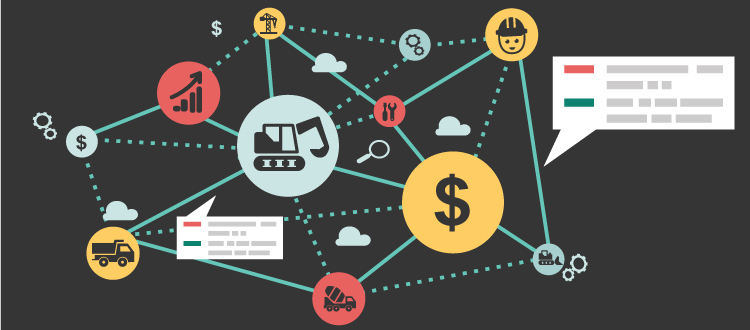Construction Accounting Guidelines for Small and Growing Contractors
Construction Accounting Guidelines for Small and Growing Contractors
Blog Article
A Comprehensive Guide to Building Audit: Optimize Your Financial Monitoring
Efficient monetary monitoring is essential in the construction industry, where the complexities of project-based revenue and costs can dramatically affect total productivity. By utilizing ideal practices in financial reporting and analysis, stakeholders can not only improve functional efficiency yet also mitigate prospective dangers.
Recognizing Building And Construction Audit
Comprehending building and construction accounting is important for the effective administration of funds in the building industry. This specialized branch of accountancy addresses the special challenges faced by construction firms, consisting of project-based profits acknowledgment, expense tracking, and compliance with regulatory needs. Unlike typical accountancy, building and construction audit needs a distinctive technique to manage the complexities connected with lasting agreements and rising and fall prices.
Key parts of building and construction audit consist of accurate income recognition, which usually counts on the percentage-of-completion approach or completed-contract approach, depending on the job's nature. This makes certain that economic declarations mirror real efficiency and success over time. Moreover, work costing plays a vital function, enabling firms to track costs connected with certain jobs, which aids in figuring out productivity and resource appropriation.
One more critical aspect is the administration of cash money circulation, which is usually impacted by repayment schedules and delays in receivables. Effective capital management makes sure that building and construction companies can meet functional demands and purchase future jobs. Eventually, grasping construction bookkeeping gears up companies with the tools needed to make informed monetary decisions, reduce risks, and boost total operational performance in an affordable sector.

Work Costing and Budgeting
Task setting you back and budgeting are integral components of construction accountancy that enable companies to effectively handle project funds and guarantee earnings. Job setting you back entails the precise monitoring of all expenses related to a particular task, consisting of labor, products, equipment, and expenses. This process allows construction companies to ascertain truth price of finishing a work, facilitating notified decision-making and enhancing financial accountability.
Budgeting, on the various other hand, functions as a financial roadmap for projects. It entails establishing monetary restrictions and designating sources to various project elements, thus developing a structure versus which actual costs can be measured. Reliable budgeting calls for complete analysis and forecasting, taking right into factor to consider historic data, market fads, and potential risks.
With each other, work setting you back and budgeting provide the needed devices for building firms to check economic efficiency, recognize variances, and readjust approaches as required - construction accounting. By applying durable job setting you back practices and sticking to well-structured Recommended Site budget plans, companies can improve their operational performance, minimize monetary dangers, and ultimately enhance their earnings in an affordable industry. Hence, these methods are essential for maintaining lasting success within the construction sector
Tracking Costs and Profits
Precisely tracking expenditures and profits is crucial for building and construction companies to keep financial health and wellness and ensure task practicality. Reliable tracking allows businesses to visit homepage keep track of project efficiency, recognize price overruns, and make educated economic decisions. Carrying out a methodical strategy to taping all economic transactions is essential to accomplishing this objective.
Using construction bookkeeping software can dramatically enhance the tracking process. These tools assist in real-time tracking of costs, consisting of labor, materials, and subcontractor costs, while likewise recording revenue produced from task milestones and customer payments. By classifying expenditures and income streams, companies can obtain insights right into earnings and cash money circulation.

Financial Reporting and Evaluation
Financial coverage and analysis play a crucial function in the building and construction market, offering stakeholders with vital insights right into a firm's monetary performance and functional efficiency. Exact economic records, including balance sheets, income statements, and money flow declarations, are basic for examining the health of a construction service. These papers help identify trends, review job earnings, and help with informed decision-making.
In building and construction accounting, economic analysis goes past simple reporting; it entails scrutinizing monetary information to reveal underlying patterns and abnormalities. Key performance indicators have a peek here (KPIs), such as gross revenue margins, task conclusion rates, and roi, work as benchmarks to assess operational success. Consistently examining these metrics permits firms to determine areas requiring improvement, optimize source allowance, and boost task monitoring methods.
Additionally, effective economic reporting promotes transparency and develops trust fund with stakeholders, consisting of clients, suppliers, and financiers - construction accounting. By maintaining extensive economic oversight, building business can alleviate threats, guarantee conformity with regulative demands, and eventually drive sustainable development. Hence, a robust monetary coverage and analysis framework is crucial for navigating the intricacies of the construction landscape and achieving long-term success
Finest Practices for Success
To accomplish success in construction accounting, firms have to adopt a set of ideal practices that enhance operations and improve monetary administration. Applying a robust project administration software tailored for construction can assist in real-time tracking of task prices and budgets, permitting for more exact forecasting and source appropriation.
2nd, embracing a constant method to task costing is essential. This involves diligently tracking all costs connected with each task, consisting of labor, products, and overheads. Routinely evaluating work prices against initial price quotes aids identify differences early, enabling prompt restorative activities.
Third, preserving strenuous documents techniques guarantees compliance with laws and streamlines audits. This consists of keeping thorough documents of contracts, change orders, billings, and invoices.
In addition, buying personnel training is necessary. Ensuring that employees are fluent in accounting concepts, software use, and market criteria can substantially boost effectiveness and precision in economic coverage.
Conclusion

Report this page